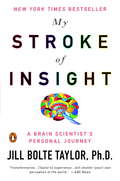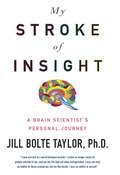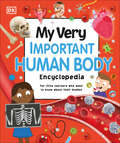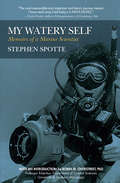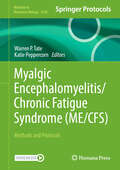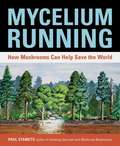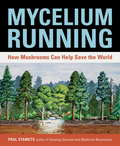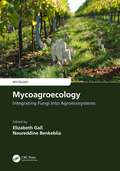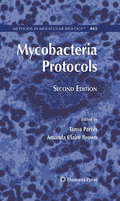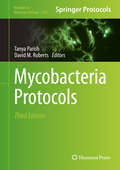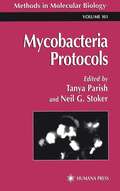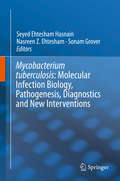- Table View
- List View
My Stroke of Insight
by Jill Bolte TaylorOn the morning of the 10th December 1996, Jill Bolte Taylor, a thirty-seven-year-old Harvard-trained brain scientist experienced a massive stroke when a blood vessel exploded in the left side of her brain. A neuroanatomist by profession, she observed her own mind completely deteriorate to the point that she lost the ability to walk, talk, read, write, or recall any of her life, all within the space of four hours. As the damaged left side of her brain - the rational, logical, detail and time-oriented side - swung in an out of function, Taylor alternated between two distinct and opposite realities: the euphoric Nirvana of the intuitive and emotional right brain, in which she felt a sense of complete well-being and peace; and the logical left brain, that realized Jill was having a stroke and enabled her to seek help before she was lost completely. In My Stroke of Insight: A Brain Scientist's Personal Journey, Taylor brings to light a new perspective on the brain and its capacity for recovery that she gained through the intimate experience of awakening her own injured mind. The journey to recovery took eight years for Jill to feel completely healed. Using her knowledge of how the brain works, her respect for the cells composing her human form, and an amazing mother, Taylor completely repaired her mind and recalibrated her understanding of the world according to the insight gained from her right brain that December morning.
My Stroke of Insight: A Brain Scientist's Personal Journey
by Jill Bolte TaylorA 37-year-old brain scientist has a massive stroke and observes her own mind deteriorate to the point where she can't walk, talk, read, write or recall her life, within 4 hours.
My Stroke of Insight: A Brain Scientist's Personal Journey
by Jill Bolte TaylorThe astonishing New York Times bestseller that chronicles how a brain scientist's own stroke led to enlightenment On December 10, 1996, Jill Bolte Taylor, a thirty-seven- year-old Harvard-trained brain scientist experienced a massive stroke in the left hemisphere of her brain. As she observed her mind deteriorate to the point that she could not walk, talk, read, write, or recall any of her life-all within four hours-Taylor alternated between the euphoria of the intuitive and kinesthetic right brain, in which she felt a sense of complete well-being and peace, and the logical, sequential left brain, which recognized she was having a stroke and enabled her to seek help before she was completely lost. It would take her eight years to fully recover. For Taylor, her stroke was a blessing and a revelation. It taught her that by "stepping to the right" of our left brains, we can uncover feelings of well-being that are often sidelined by "brain chatter." Reaching wide audiences through her talk at the Technology, Entertainment, Design (TED) conference and her appearance on Oprah's online Soul Series, Taylor provides a valuable recovery guide for those touched by brain injury and an inspiring testimony that inner peace is accessible to anyone.
My Stroke of Insight: A Brain Scientist's Personal Journey
by Jill Bolte TaylorThe astonishing New York Times bestseller that chronicles how a brain scientist's own stroke led to enlightenment On December 10, 1996, Jill Bolte Taylor, a thirty-seven- year-old Harvard-trained brain scientist experienced a massive stroke in the left hemisphere of her brain. As she observed her mind deteriorate to the point that she could not walk, talk, read, write, or recall any of her life-all within four hours-Taylor alternated between the euphoria of the intuitive and kinesthetic right brain, in which she felt a sense of complete well-being and peace, and the logical, sequential left brain, which recognized she was having a stroke and enabled her to seek help before she was completely lost. It would take her eight years to fully recover. For Taylor, her stroke was a blessing and a revelation. It taught her that by "stepping to the right" of our left brains, we can uncover feelings of well-being that are often sidelined by "brain chatter." Reaching wide audiences through her talk at the Technology, Entertainment, Design (TED) conference and her appearance on Oprah's online Soul Series, Taylor provides a valuable recovery guide for those touched by brain injury and an inspiring testimony that inner peace is accessible to anyone.
My Thoughts on Biological Evolution (Evolutionary Studies)
by Motoo KimuraThis book, written by Motoo Kimura (1924–94), is a classic in evolutionary biology. In 1968, Kimura proposed the “neutral theory of molecular evolution”, which became the theoretical basis of modern evolutionary studies. After publishing his work in 1983 in the book “Neutral Theory of Molecular Evolution”, Kimura wrote this book in 1988 for the general public. It was originally written in Japanese and is translated here for the first time. In the book, Kimura first summarizes the development of evolutionary theory since Lamarck and Darwin. He then shows how the search for mechanisms of evolution developed into population genetics and describes how the study of molecular evolution matured by taking in the fruits of molecular biology. Kimura proceeds to carefully explain his neutral evolution theory at the molecular level. Finally, he presents his view of the world from an evolutionary perspective. The book has long served as an in-depth introduction to evolutionary biology for students and young researchers in Japan. There has been remarkably rapid progress in the field of bioscience at the molecular level over the past 30 years. Nevertheless, the book remains an important contribution that laid the foundations for what followed in molecular evolutionary studies.
My Universe
by Ya B. ZeldovichIn this fascinating book, the reader is offered a selection of papers summarizing the unique contribution to modern cosmology of the Soviet school, led by the late Ya.B. Zeldovich. The first three articles in this selection introduce the general reader to the underlying theories of cosmology: the birth and expansion of the universe, matter and antimatter. The remaining five contributions are review papers offering the more advanced reader a deeper understanding of the structure of the universe, cosmological field theory, microwave background radiation and galactic distribution. This balance of introductory and advanced papers makes My Universe a work of value for graduate students entering the field, for research workers expanding their knowledge, and for the layman seeking an insight into one of the most important subjects of the twentieth century.
My Very Important Human Body Encyclopedia: For Little Learners Who Want to Know About Their Bodies (My Very Important Encyclopedias)
by DKThis exciting introduction to the human body is brimming with super senses, marvelous medicine, and record-breaking feats.The world is so much bigger than young minds can fathom and there is always more to learn. My Very Important Human Body is a vibrant encyclopedia for curious 5-9 year olds with a unique approach to the human body. Little learners can easily digest scientific information with this breakdown of how our bodies work and all the complex mechanisms that are inside us. Full of fun facts, colorful illustrations, and games that will keep them entertained, this children&’s encyclopedia is filled with age-appropriate knowledge on a range of topics that support the curriculum. Get ready for a scientific adventure and investigate the ins and outs of the human body from the top of your head to the tips of your toes! This human body encyclopedia for children offers: - Fun facts about bones, blood, body bugs, amazing medical moments, and more!- An inclusive approach, with disabilities, neurodiversity, and physical differences represented throughout the book.- Chapters focusing on anatomical journeys around the body, skeletal framework, body parts and system, the senses, common health problems, and healthy living.- Colorful illustrations which go alongside fascinating information about the body.This bumper book for little learners that&’s bursting with facts about what goes on in our insides. Follow your food on a journey through the body. Discover what&’s going on when you cough and sneeze. Learn about incredible, life-changing medical discoveries from ancient history to the present day. Marvel at record-breaking human bodies, and see how animals compare!More in the seriesMy Very Important Human Body Encyclopedia is part of the educational My Very Important Encyclopedia series. Complete the collection and nurture your child's curiosity with My Encyclopedia of Very Important Adventures, teach them about different species with My Encyclopedia of Very Important Animals, or let them walk with dinosaurs who ruled the earth before them in My Encyclopedia of Very Important Dinosaurs.
My Wand is Broken
by Liz HuyckAfter a wizard, a witch, and a goblin all fail to transform a frog with their magic wands, two scientists need to explain the rules of reality. While you can't actually turn frogs into diamonds, there are plenty of magical things that science can do!
My Watery Self
by Stephen SpotteIn MY WATERY SELF: AN AQUATIC MEMOIR, author/scientist Stephen Spotte traces a fascinating trail through a life that began in West Virgina coal camps, drifted through reckless bohemian times of countercultural indulgence in Beach Haven, New Jersey, and led to a career as a highly-respected marine biologist. Together, these stories form a view not just of one man's life, but that of a generation that often refused to take a direct path to the workplace, insisting instead on a winding unveiling of true self-realization, to achieve previously-unimagined outcomes. For Spotte, the key was water: His years of beach living led to a self-initiated study of literature and the sea. He eventually returned to college and received his training as a marine biologist, and discovered, through his singular voice, a wet and occasionally very weird perspective on the world. His writing is engrossing throughout, the stories he shares--such as his stint as curator of the New York Aquarium at Coney Island at the tail end of the hippie era--are compelling and thoroughly enjoyable as he elevates the people and situations he encounters to mythical levels, blending empirical observation with literary prose.
My Weird School Fast Facts: Dinosaurs, Dodos, and Woolly Mammoths (My Weird School Fast Facts #6)
by Dan Gutman Jim PaillotThink fast with A.J. and Andrea from My Weird School!Did you know that the biggest dinosaur was probably six stories high and half a football field long? Did you know that Utah is the only place in the world where it’s legal to hunt dinosaurs?!Learn more weird-but-true dinosaur facts with A.J. and Andrea from Dan Gutman’s bestselling My Weird School series. This all-new series of nonfiction books features hundreds of hysterical facts, plus lots of photos and illustrations.Whether you're a kid who wants to learn more about dinosaurs or simply someone who wants to know the name for fossilized dinosaur poop, this is the book for you!With more than 12 million books sold, the My Weird School series really gets kids reading!
My Weird School Goes to the Museum (I Can Read Level 2)
by Dan GutmanThis fun Level Two I Can Read book, geared toward kids who read on their own but still need a little help, is based on Dan Gutman’s My Weird School series, which has sold more than 12 million books!A.J. and Andrea are taking a class trip to the museum! Their museum guide has been warned that one of them might misbehave. But who will it be? Join A.J. and Andrea from Ella Mentry School on this hilarious field trip as they show young readers why they attend the weirdest—and most fun!—school around.
My Weird School: Class Pet Mess! (I Can Read Level 2)
by Dan GutmanA new series of Level Two I Can Read titles based on Dan Gutman’s My Weird School series, which has sold more than 11 million books!Mr. Cooper's class is getting a pet! Alexia hopes it is something cool, like a snake. But is she ready to take care of the pet, or will it be one weird mess? Join A.J. and the gang from Ella Mentry School as they show young readers why they attend the weirdest—and most fun!—school around.My Weird School: Class Pet Mess is a Level Two I Can Read book, geared for kids who read on their own but still need a little help.
My Weird School: Talent Show Mix-up (I Can Read Level 2)
by Dan GutmanA new series of Level Two I Can Read titles based on Dan Gutman’s My Weird School series, which has sold more than 12 million books!Mr. Cooper’s class is having a talent show. But A.J. has a problem—he doesn’t have a talent! What will he do when the big day comes? Join A.J. and the gang from Ella Mentry School as they show young readers why they attend the weirdest—and most fun!—school around.My Weird School: Talent Show Mix-Up is a Level Two I Can Read book, geared for kids who read on their own but still need a little help.
My, Oh My-A Butterfly! All About Butterflies: All About Butterflies (The Cat in the Hat's Learning Library)
by Tish RabeLaugh and learn with fun facts about caterpillars, moths, different kinds of butterflies, and more—all told in Dr. Seuss&’s beloved rhyming style and starring the Cat in the Hat! &“Butterflies are surprising and beautiful things as they soar through the air on their bright-colored wings.&” The Cat in the Hat&’s Learning Library series combines beloved characters, engaging rhymes, and Seussian illustrations to introduce children to non-fiction topics from the real world! Take flight with the Cat in the Hat and discover: how butterflies see thousands of images at oncedrink nectar from flowers using tubes (like straws!)lay eggs as small as the head of a pinand much more!Perfect for story time and for the youngest readers, My, Oh My—A Butterfly! All About Butterflies also includes an index, glossary, and suggestions for further learning. Look for more books in the Cat in the Hat&’s Learning Library series!High? Low? Where Did It Go? All About Animal CamouflageIs a Camel a Mammal? All About MammalsThe 100 Hats of the Cat in the Hat: A Celebration of the 100th Day of SchoolA Great Day for Pup: All About Wild BabiesWould You Rather Be a Pollywog? All About Pond LifeHappy Pi Day to You! All About Measuring CirclesI Can Name 50 Trees Today! All About TreesFine Feathered Friends: All About BirdsOh Say Can You Seed? All About Flowering PlantsInside Your Outside! All About the Human BodyIce is Nice! All About the North and South Poles
MySpace to Sacred Space: God for a New Generation
by Christian Piatt Amy PiattRecently, MySpace.com has become one of the most-visited Web sites in the world. With millions of young users, this one site has made a giant impact on youth pop culture in just a matter of a few years. At the same time, themes of spirituality pervade our lives. From television to film and popular literature, theology is a burgeoning enterprise in popular culture. In contrast, most churches and denominations are built on eighteenth-century principles, and are fighting to remain relevant to young members. The collective fear is that if the church doesn't adapt to this new generation, they will be left behind forever. Christian and Amy Piatt believe church leaders have a responsibility to stay tuned in to the values and vernacular employed by the younger generations. MySpace to Sacred Space combines first-hand accounts with case studies from people both within and outside the church. Far from tolling the death knell for the established church, MySpace to Sacred Space is an affirming, hopeful look at the ever-growing need for what the Christian faith can offer the world. Much of the relevance for the twenty-first century church can be found in our oldest traditions. By reconnecting with our past and by setting time aside for God and for one another, we have an opportunity to create sacred space and time wherever we are.
Myalgic Encephalomyelitis/Chronic Fatigue Syndrome: Methods and Protocols (Methods in Molecular Biology #2920)
by Warren P. Tate Katie PeppercornThis detailed volume explores the condition of Myalgic Encephalomyelitis/Chronic Fatigue Syndrome (ME/CFS) and the recent techniques used to investigate the dysfunctional pathophysiology in patients. Beginning with a section on diagnosis, the book continues by covering the chronic cellular and molecular changes in the peripheral immune system that affect their molecular homeostasis, metabolic changes, as well as imaging technologies to understand the brain&’s dysfunction in aberrantly regulating body physiology in ME/CFS. Written for the highly successful Methods in Molecular Biology series, chapters include introductions to their respective topics, lists of the necessary materials and reagents, step-by-step and readily reproducible laboratory protocols, and tips on troubleshooting and avoiding known pitfalls. Authoritative and practical, Myalgic Encephalomyelitis/Chronic Fatigue Syndrome (ME/CFS): Methods and Protocols serves as an ideal guide for clinicians and researchers working to better understand post-viral/stressor conditions in order to improve the lives of those affected with ME/CFS and, most recently, long COVID.
Mycelium Running
by Paul StamentsMycelium Runningis a manual for the mycological rescue of the planet. That's right: growing moremushroomsmay be the best thing we can do to save the environment, and in this groundbreaking text from mushroom expert Paul Stamets, you'll find out how. The basic science goes like this: Microscopic cells called "mycelium"--the fruit of which are mushrooms--recycle carbon, nitrogen, and other essential elements as they break down plant and animal debris in the creation of rich new soil. What Stamets has discovered is that we can capitalize on mycelium's digestive power and target it to decompose toxic wastes and pollutants (mycoremediation), catch and reduce silt from streambeds and pathogens from agricultural watersheds (mycofiltration), control insect populations (mycopesticides), and generally enhance the health of our forests and gardens (mycoforestry and myco-gardening). In this comprehensive guide, you'll find chapters detailing each of these four exciting branches of what Stamets has coined "mycorestoration," as well as chapters on the medicinal and nutritional properties of mushrooms, inoculation methods, log and stump culture, and species selection for various environmental purposes. Heavily referenced and beautifully illustrated, this book is destined to be a classic reference for bemushroomed generations to come.
Mycelium Running: How Mushrooms Can Help Save the World
by Paul StametsMycelium Running is a manual for the mycological rescue of the planet. That’s right: growing more mushrooms may be the best thing we can do to save the environment, and in this groundbreaking text from mushroom expert Paul Stamets, you’ll find out how. The basic science goes like this: Microscopic cells called “mycelium”--the fruit of which are mushrooms--recycle carbon, nitrogen, and other essential elements as they break down plant and animal debris in the creation of rich new soil. What Stamets has discovered is that we can capitalize on mycelium’s digestive power and target it to decompose toxic wastes and pollutants (mycoremediation), catch and reduce silt from streambeds and pathogens from agricultural watersheds (mycofiltration), control insect populations (mycopesticides), and generally enhance the health of our forests and gardens (mycoforestry and myco-gardening). In this comprehensive guide, you’ll find chapters detailing each of these four exciting branches of what Stamets has coined “mycorestoration,” as well as chapters on the medicinal and nutritional properties of mushrooms, inoculation methods, log and stump culture, and species selection for various environmental purposes. Heavily referenced and beautifully illustrated, this book is destined to be a classic reference for bemushroomed generations to come.From the Trade Paperback edition.
Mycoagroecology: Integrating Fungi into Agroecosystems (Mycology #33)
by Noureddine Benkeblia Elizabeth “Izzie” GallDuring the 20th century, agriculture underwent many unsustainable changes for the sake of greater food production. Today, the effects of climate change are becoming ever more apparent and the global population continues to grow, placing additional pressures on agricultural systems. For this reason, it is vital to turn international agriculture towards a sustainable future capable of providing healthy, bountiful foods by using methods that preserve and reconstruct the balance of natural ecosystems. Fungi are an underappreciated, underutilized group of organisms with massive potential to aid in the production of healthy food and other products while also increasing the sustainability of agricultural systems. Mycoagroecology: Integrating Fungi into Agroecosystems lays the foundations for integrated fungal-agricultural understanding and management, the proposed practice of “mycoagroecology”. Suitable for students and professionals of multiple disciplines, this text includes nine introductory chapters that create a firm foundation in ecosystem functioning, evolution and population dynamics, fungal biology, principles of crop breeding and pest management, basic economics of agriculture, and the history of agricultural development during the 20th century. The latter half of the text is application-oriented, integrating the knowledge from the introductory chapters to help readers understand more deeply the various roles of fungi in natural and agricultural systems: PARTNERS: This text explores known benefits of wild plant-fungal mutualisms, and how to foster and maintain these relationships in a productive agricultural setting. PESTS AND PEST CONTROL AGENTS: This text acknowledges the historical and continuing role of agriculturally significant fungal pathogens, surveying modern chemical, biotechnological, and cultural methods of controlling them and other pests. However, this book also emphasizes the strong potential of beneficial fungi to biologically control fungal, insect, and other pests. PRODUCTS: This text covers not just isolated production of mushrooms on specialized farms but also the potential for co-cropping mushrooms in existing plant-based farms, making farm systems more self-sustaining while adding valuable and nutritious new products. An extensive chapter is also devoted to the many historical and forward-facing uses of fungi in food preservation and processing.
Mycobacteria Protocols
by Tanya Parish Amanda Claire BrownDue to the rising threat of tuberculosis and other mycobacterial infections, methods to study the biology of the mycobacteria and to improve diagnostic, therapeutic and preventative reagents are still very much in need. Mycobacteria Protocols, Second Edition updates and refines the methods of the well-received first edition while adding newly developed methods culled from the most cutting-edge research in the field. Ranging from the basics of sub-cellular fractionation to advanced methods using specialized growth conditions and whole genome, transcriptome and proteome analysis, the chapters conform to the Methods in Molecular BiologyTM series format, providing step-by-step laboratory protocols, lists of necessary materials and reagents, and tips on troubleshooting and avoiding known pitfalls. Comprehensive and up-to-date, Mycobacteria Protocols, Second Edition is the perfect resource to promote and stimulate further research into these intriguing, important and most fractious of bacteria.
Mycobacteria Protocols
by Tanya Parish David M. RobertsDue to the rising threat of tuberculosis and other mycobacterial infections, methods to study the biology of the mycobacteria and to improve diagnostic, therapeutic and preventative reagents are still very much in need. Mycobacteria Protocols, Second Edition updates and refines the methods of the well-received first edition while adding newly developed methods culled from the most cutting-edge research in the field. Ranging from the basics of sub-cellular fractionation to advanced methods using specialized growth conditions and whole genome, transcriptome and proteome analysis, the chapters conform to the Methods in Molecular Biology(tm) series format, providing step-by-step laboratory protocols, lists of necessary materials and reagents, and tips on troubleshooting and avoiding known pitfalls. Comprehensive and up-to-date, Mycobacteria Protocols, Second Edition is the perfect resource to promote and stimulate further research into these intriguing, important and most fractious of bacteria.
Mycobacteria Protocols
by Tanya ParishLaboratory experts present cutting-edge molecular biology techniques for studying the mycobacteria, a medically significant group of organisms responsible for both human and animal disease, including tuberculosis and leprosy. The methods range from basic culture techniques, cell fractionation, and nucleic acid purification to more advanced protocols for the introduction of cloned DNA into mycobacteria, the use of reporter genes, and the expression of foreign genes. There are also important techniques for mycobacteriophages, genome analysis, chemical and transposon mutagenesis, gene replacement, and analysis of gene expression, as well as such clinically useful techniques as antibiotic susceptibility testing, speciation, and RFLP analysis.
Mycobacteria Protocols (Methods in Molecular Biology #2314)
by Tanya Parish Anuradha KumarThis fully updated edition explores the latest techniques to study the challenging, and at times dangerous, genus of bacteria known as mycobacteria with basic methods that are still required for mycobacteriology along with the newer or improved methods that have been developed. The volume features chapters on the basics of DNA isolation, protein isolation, and lipid isolation, as well as more sophisticated techniques for isolation of ribosomes, and continues with sections involving analyzing subcellular fractions, culture methods, sequencing technology, in vitro models, molecular methods, as well as drug discovery applications. Written for the highly successful Methods in Molecular Biology series, chapters include introductions to their respective topics, lists of the necessary materials and reagents, step-by-step, readily reproducible laboratory protocols, and tips on troubleshooting and avoiding known pitfalls. Authoritative and up-to-date, Mycobacteria Protocols, Fourth Edition serves as an ideal guide for those starting out with their mycobacteria research and also for those who have worked with it for decades.
Mycobacterium Tuberculosis: Molecular Infection Biology, Pathogenesis, Diagnostics and New Interventions
by Seyed Ehtesham Hasnain Nasreen Z. Ehtesham Sonam GroverThis book reviews recent advances in the molecular and infection biology, pathology, and molecular epidemiology of Mycobacterium tuberculosis, as well as the identification and validation of novel molecular drug targets for the treatment of this mycobacterial disease.Despite being completely curable, tuberculosis is still one of the leading global causes of death. M. tuberculosis, the causative organism – one of the smartest pathogens known – adopts highly intelligent strategies for survival and pathogenesis. Presenting a wealth of information on the molecular infection biology of M. tuberculosis, as well as nontuberculous mycobacteria (NTM), the book provides an overview of the functional role of the PE/PPE group of proteins, which is exclusive to the genus Mycobacteria, of host-pathogen interactions, and virulence. It also explores the pathogenesis of the infection, pathology, epidemiology, and diagnosis of NTM. Finally it discusses current and novel approaches in vaccine development against tuberculosis, including the role of nanotechnology. With state-of-the-art contributions from experts in the respective domains, this book is an informative resource for practitioners as well as medical postgraduate students and researchers.
Mycobacterium ulcerans: Methods and Protocols (Methods in Molecular Biology #2387)
by Gerd Pluschke Katharina RöltgenThis volume explores the latest techniques used to study Mycobacterium ulcerans, and more specifically M. ulcerans disease (Buruli ulcer). The chapters in this book are organized into three parts and cover methods for the detection of M. ulcerans and the analysis of host-pathogen interaction; the quantification and characterization of mycolactone, the macrolide toxin of M. ulcerans; and drug development against M. ulcerans. Written in the highly successful Methods in Molecular Biology series format, chapters include introductions to their respective topics, lists of the necessary materials and reagents, step-by-step, readily reproducible laboratory protocols, and tips on troubleshooting and avoiding known pitfalls. Authoritative and cutting-edge, Mycobacterium ulcerans: Methods and Protocols is a valuable resource that helps scientists advance their research on Buruli ulcer, which is still an under-researched field in infection biology.
